Discovery of HMS TROOPER solves decades-old mystery and helps bring closure for victims’ families – The submarine’s last special secret mission – Finds ‘speak’ from 253 meters deep
A British submarine has been found whose traces disappeared in October 1943, while it was carrying out an ordered secret mission and offensive patrol in the Aegean. It is the HMS TROOPER that was located at a depth of 253 meters in the Ikarios Sea and is the eighth sunken submarine discovered by the underwater research team of Costas Thoktaridis.
As Mr. Thoktaridis describes in APE-MPE, the total length of 84 meters TROOPER is cut into three distinct sections, bow, middle section and stern, which confirms a very violent sinking, after a mine explosion . Locating the wreck not only solves a decades-old mystery but also helps bring closure for families of the victims. “It is with great emotion that I learn that the distinguished Greek researcher Kostas Thoktaridis and his team have solved an 81-year-old mystery and discovered the location of the wreck of the British submarine HMS Trooper. Knowing the location of the final resting place of our submarine men will help provide an epilogue for surviving relatives and descendants and serves as a timely reminder of this special class of men who made the ultimate sacrifice. Resurgam” says George Malcolmson , former Director of Archives of the Royal Navy Submarine Museum, to APE-MPE .
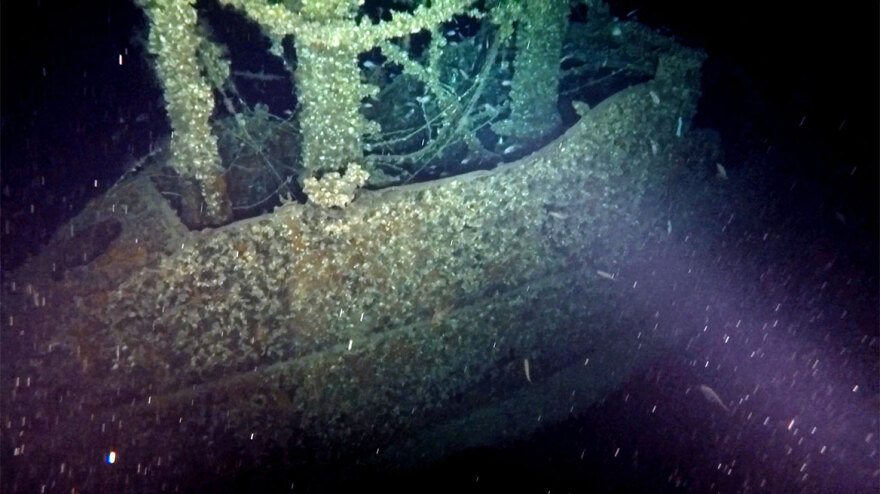
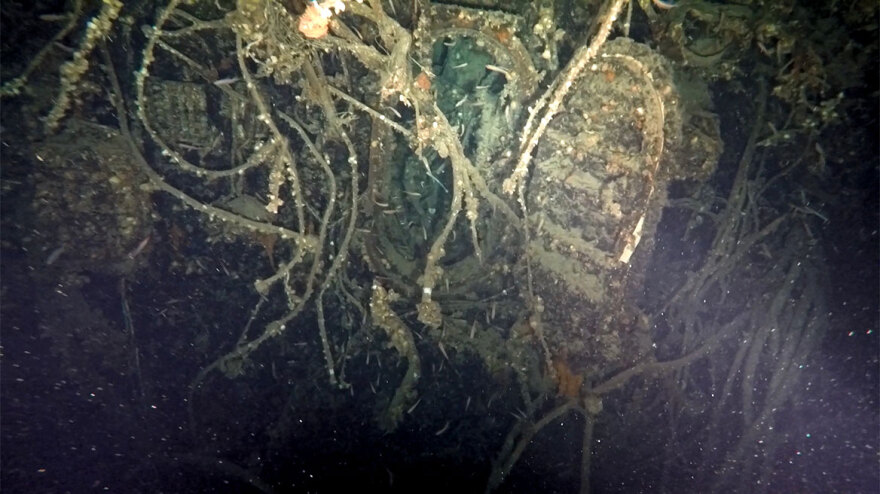
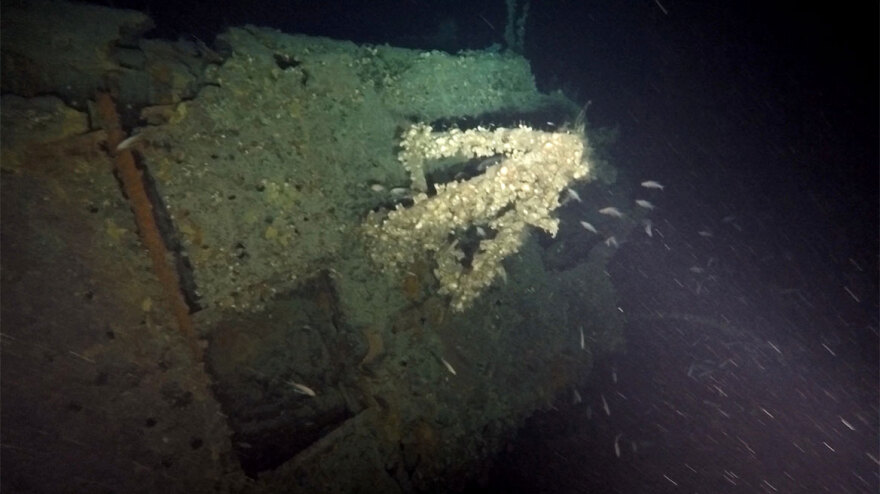
For his part, Richard Wraith , Captain CBE in the Royal Navy and son of the captain of TROOPER, told APE-MPE:
“I have known for many years the painstaking effort of the search team to locate the wreck of the submarine and now I am very pleased and excited that their efforts were rewarded. I hope that the family members of those lost along with my father will be able to use TROOPER’s definitive status as a reference point to help lay their loved ones’ memories to rest.”
Throughout the investigations, there was no intervention or disturbance of the wreck, as it is a liquid grave of the 64 men of the crew of the submarine TROOPER. Among them was Australian volunteer officer Lieutenant John Stuart Ryder, 22.
The historical background of the era
The capitulation of Italy on September 8, 1943, opened the Aeolian Sea in the Aegean , as the Germans were determined to take control of the Dodecanese from the Italians while they were unwilling to allow the presence of Allied troops in the Aegean islands .
At the end of September, the British were informed of the concentration of German landing craft in the ports of Piraeus and Crete and the loading of troops and supplies, with the apparent destination of the Dodecanese. HMS TROOPER under Lt. John S. Wraith, sailed from Beirut on her eighth offensive patrol on 26 September and was ordered to the Aegean. At the same time, however, the German minesweeper DRACHE was laying mines in the Ikarian Sea.
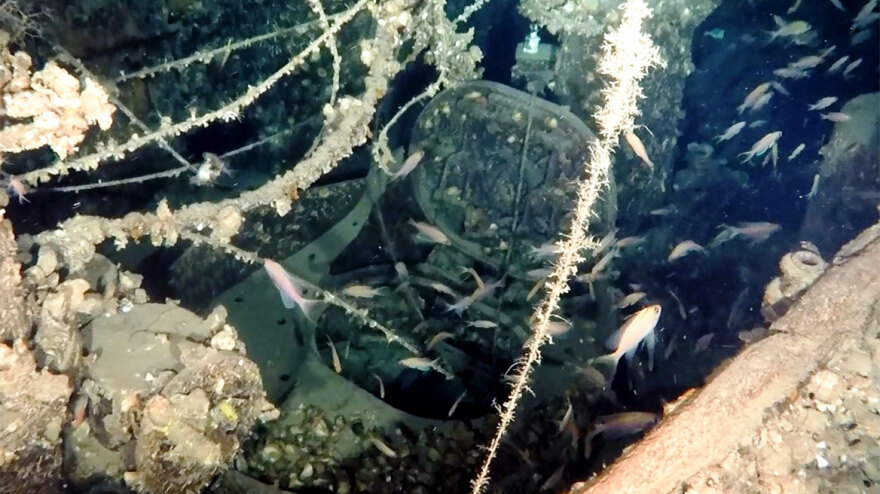
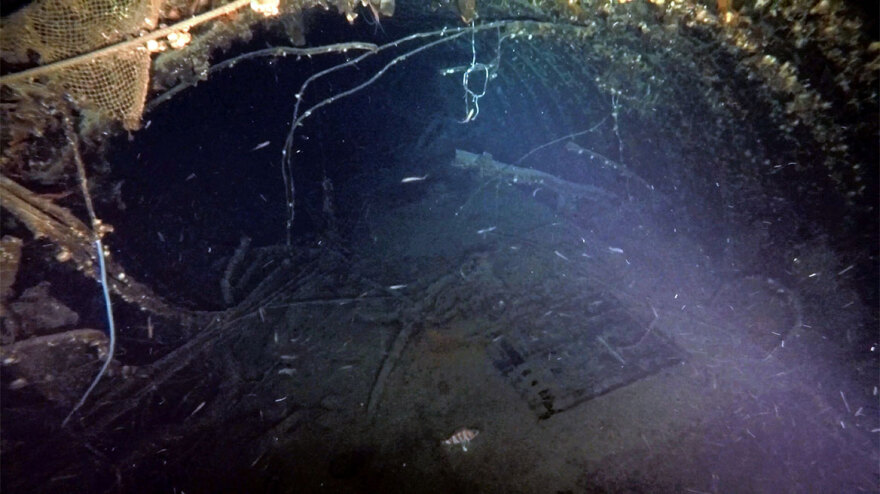
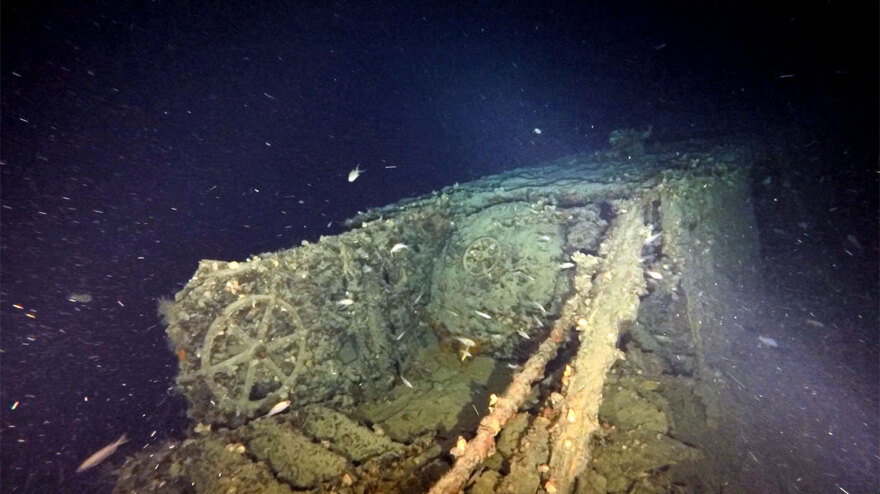
The last special secret mission
In addition to the offensive patrol in the Aegean, the captain of the submarine was tasked with the transport of three agents as well as valuable cargo that had to be landed at Kalamos in Euboea. On the evening of 30 September 1943 at 23:00, the TROOPER reached the pre-arranged area and gradually landed on the shore Major George Diamantopoulos of the Greek Intelligence Service, who had been seconded to the British SOE on a special mission. He would act alone in carrying out Operation Eruption. In addition, Hierolohite Lieutenant Emmanuel Veis and a radio operator with the code name “Thomas” disembarked from the British submarine, carrying with them 400 kg of supplies.
The disembarkation was successfully completed at 03:00 on 1 October 1943… they were the last people to emerge alive from the submarine.
The Greek agent
Major G. Diamantopoulos (alias Toby) was not a random choice. He was a graduate of the Metsov polytechnic (mechanical engineer), spoke German, English, Italian and French, was trained in secret warfare. A war veteran, he was a former artillery squadron commander in the Albanian War, distinguished himself in the Middle East, while commanding III Squadron in the Western Desert.

Eruption: dangerous mission in Athens
With passwords and under extreme secrecy, G. Diamantopoulos managed to penetrate into occupied Athens and get in touch with important personalities such as: FOTIADIS, SPIROPOULOS, KALKADIS, MIKROULIS, RANKINTZIS, ARONIS, KARAMANOLIS, KIFONIDIS, PANAGOPOULOS, DOXIADIS, IOANNIDIS, EVERT, GEORGAKI, Archbishop DAMASKINOS, PANAGAKOS, VENTIRIS, SPILIOTOPOULOS, GRIVAS, TAMPAKOPOULOS and KYROU, collecting information about the military situation of the Germans in Greece. In addition, he delivered 900 gold pounds and a radio to organizations in Athens to support the secret war. The second leg of Diamantopoulos’ mission was the gathering of information for the investigation of the murder of IOANNIS TSIGADES. The British put comparative questions in writing to specific persons of occupying Athens with the objective of discovering the truth about the betrayal and murder of IOANNIS TSIGANDE.
The last voyage of the U-boat Trooper
On October 5, 1943, the British had information of a new landing operation by the Germans with the possible objective of Leros. Thus, the submarine TROOPER was ordered to patrol between Donousa and Ikaria. From then on, traces of TROOPER disappeared and when he did not show up on October 17, when he was supposed to return to Beirut, he was considered missing.
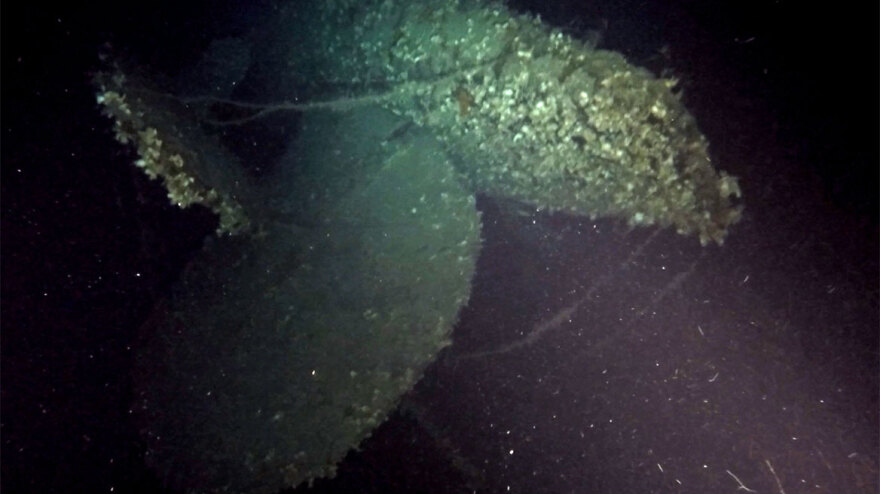


Tracking through the archives
The historic search for the Trooper began in 1998 from England and the first underwater search took place in 2000. Since then there have been 14 more failed missions in the Dodecanese. The research had focused on the minefields of Leros and then Kalymnos and Kos. 10 sea minefields were searched without finding the Trooper submarine.

Seligman Theory
On the morning of October 14, 1943, an event took place that caused the entire investigation into the sinking of the TROOPER to go astray.
The boat LS8 belonging to the Levant Schooner Flotilla (LSF), had an encounter with a British “T” class submarine that surfaced alongside it in Alindas Bay in Leros. The captain of the boat and commander of the flotilla, Commodore Adrian Seligman, described in his book “War in the islands” his encounter with the submarine, which he believed to be HMS TROOPER, as he reported that he recognized the loud and gruff voice of Lt. Wraith. This information was adopted as it coincided with the order sent by the British admiralty to TROOPER, while post-war this version was strengthened more when the mining of the area became known.
The search starts from the beginning with a new scenario and a change in the marine field of research.
The Seligman version prevailed in the relevant literature, but it turned out to have a significant weakness. Researchers S. Vougidis and K. Thoktaridis studying the diaries and reports of the British submarines found that in the report of the captain of HMS TORBAY there was the incident in Leros – exactly as Seligman described it! It was not the TROOPER but the same type TORBAY!
As officer P.N. tells APE-MBE. Spyros Vougidis: “We arrived at this innovative version of the sinking of the submarine after persistent and detailed analysis of the movements of all involved and the utilization of a very large amount of archival material.”
Another issue that troubled the investigation was that the TROOPER gave no signs of life after being spotted from the air on 4 October 1943. It was not seen by anyone and no attack was attempted while it was in an area where enemy units were proven to have passed through. Unlike the TROOPER, the UNRULY, UNRIVALED, UNSPARING and TORBAY submarines that operated in those days in Greece, had regular interaction with the enemy either by spotting them or by attacking them. Only the TROOPER remained silent and undetected for so many days in an area of heavy and sustained enemy air presence as well as heavy shipping traffic. This confirmed the new theory that TROOPER had not reached Leros after all.
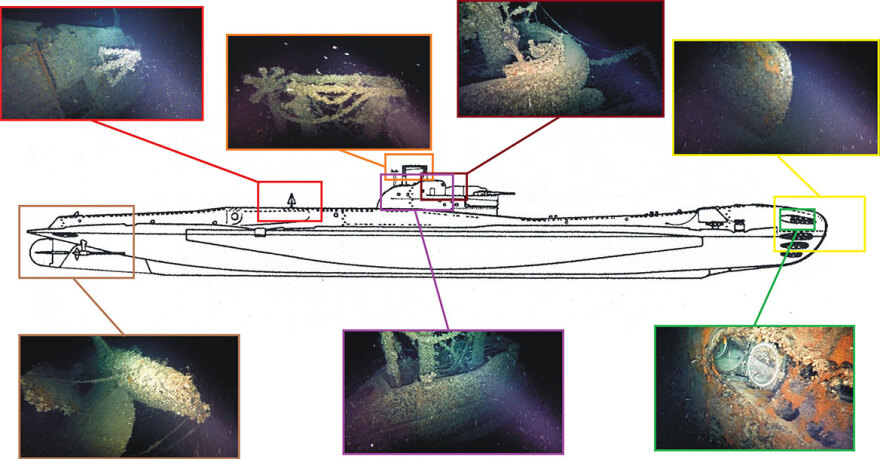
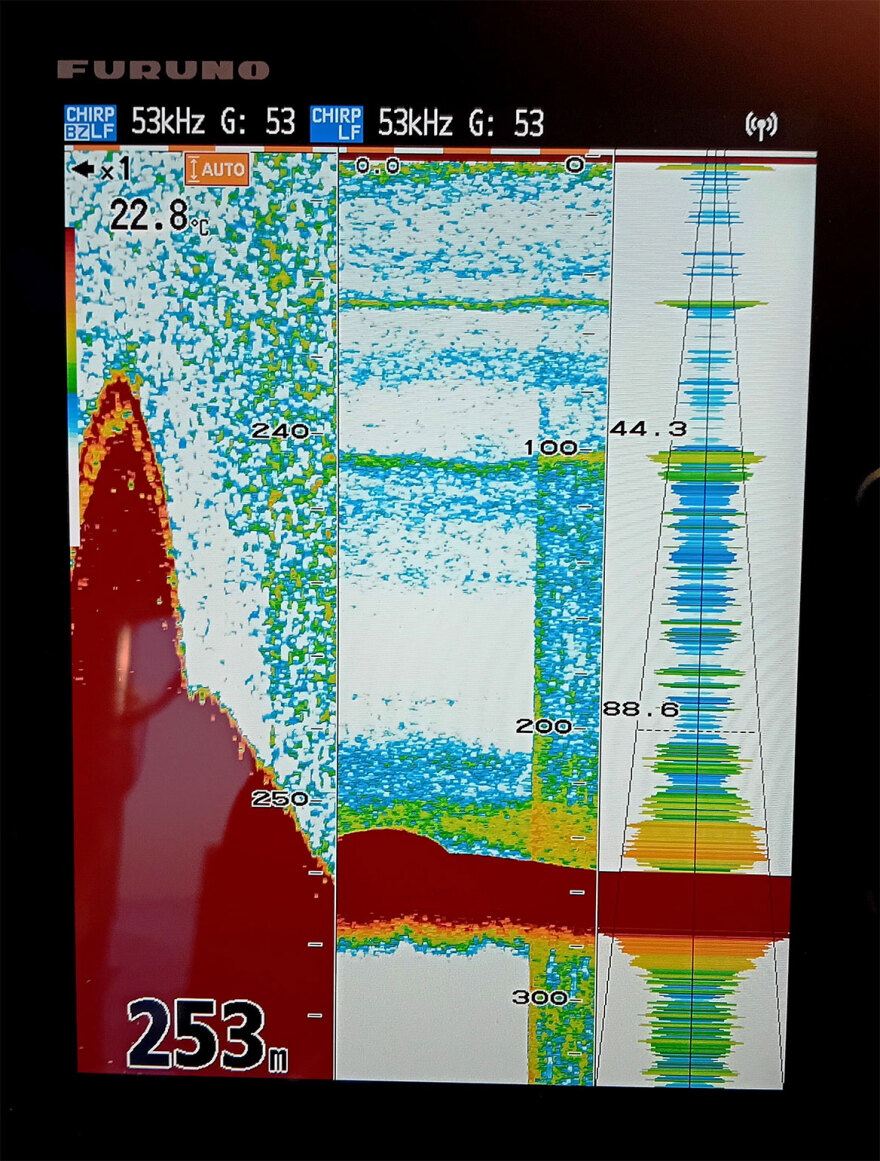
Historical turning point
Research in Greek, German and British archives
The team proceeded to investigate all German minefields laid by the Germans in the Aegean and it was found that the minesweeper DRACHE on September 26, 1943 laid five anti-submarine minefields with 287 mines north of Donoussa, on the day that the submarine TROOPER was departing from Beirut for its last mission. It was the area the submarine’s commander was ordered to patrol between 6 and 9 October 1943, before the ordered move to Leros.
The correctness of this theory had to be proved in practice by the results of field research. The 15th in a row and the last expedition started in 2023 and this time not in the Dodecanese but in the heart of the Aegean, in the Ikarian sea. Ikario is, as Mr. Thoktaridis says, one of the most difficult seas with strong wind, waves and strong underwater currents. The continuous and persistent research, however, bore fruit.
The wreck of HMS TROOPER was located in international territorial waters north of Donoussa, at a depth of 253 meters, on one of the 5 German minefields laid by DRACHE on 26 September 1943.
The initial pinpointing of the exact position of the wreck was achieved by dual-broadcast sonar CHIRP technology.
In the final phase, the identification was made using an unmanned underwater remote-controlled ROV vehicle of the Super Achille type.
HMS Trooper: Finds ‘speak’ from 253 meters deep
Eighty-one years after its loss, the first images of HMS Trooper from -253 meters (830 ft) in the Ikarian Sea are awe-inspiring.
The submarine entered one of the five minefields that had been laid a few days before by the German minelayer DRACHE and sank in the early hours of October 7, 1943, taking with it 64 officers and sailors on board.
According to Mr. Thoktaridis: “The total length of 84 meters TROOPER is cut into three distinct sections, bow, middle section and stern, which confirms a very violent sinking, after a mine explosion. The sinking of the submarine was due to the explosion of a German EMF type mine containing 350 kg of hexanite (a mixture of ammonium nitrate and trinitrotoluene known as Hexanite). The result of the explosion was the immediate rapid sinking of the submarine with breaking – dismemberment of the submarine into three pieces. First the bow sank, then the stern and finally, the middle part which remained for a few minutes on the surface”.
The bow and stern lie on the bottom in close proximity, while the submarine’s turret has been detached and is quite a distance away. The setting is eerie…
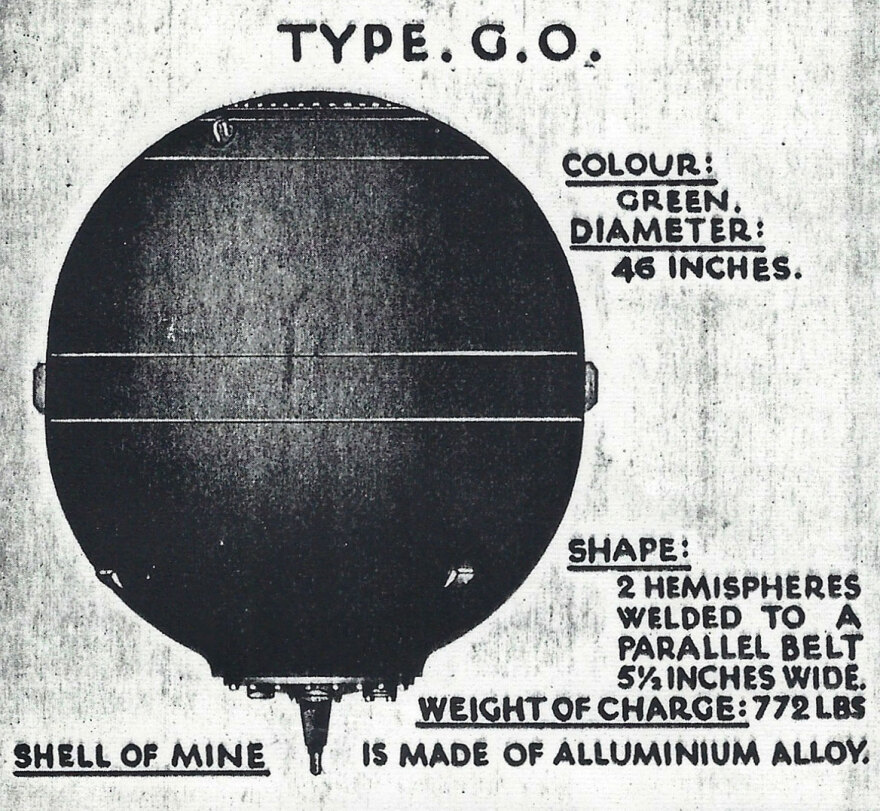
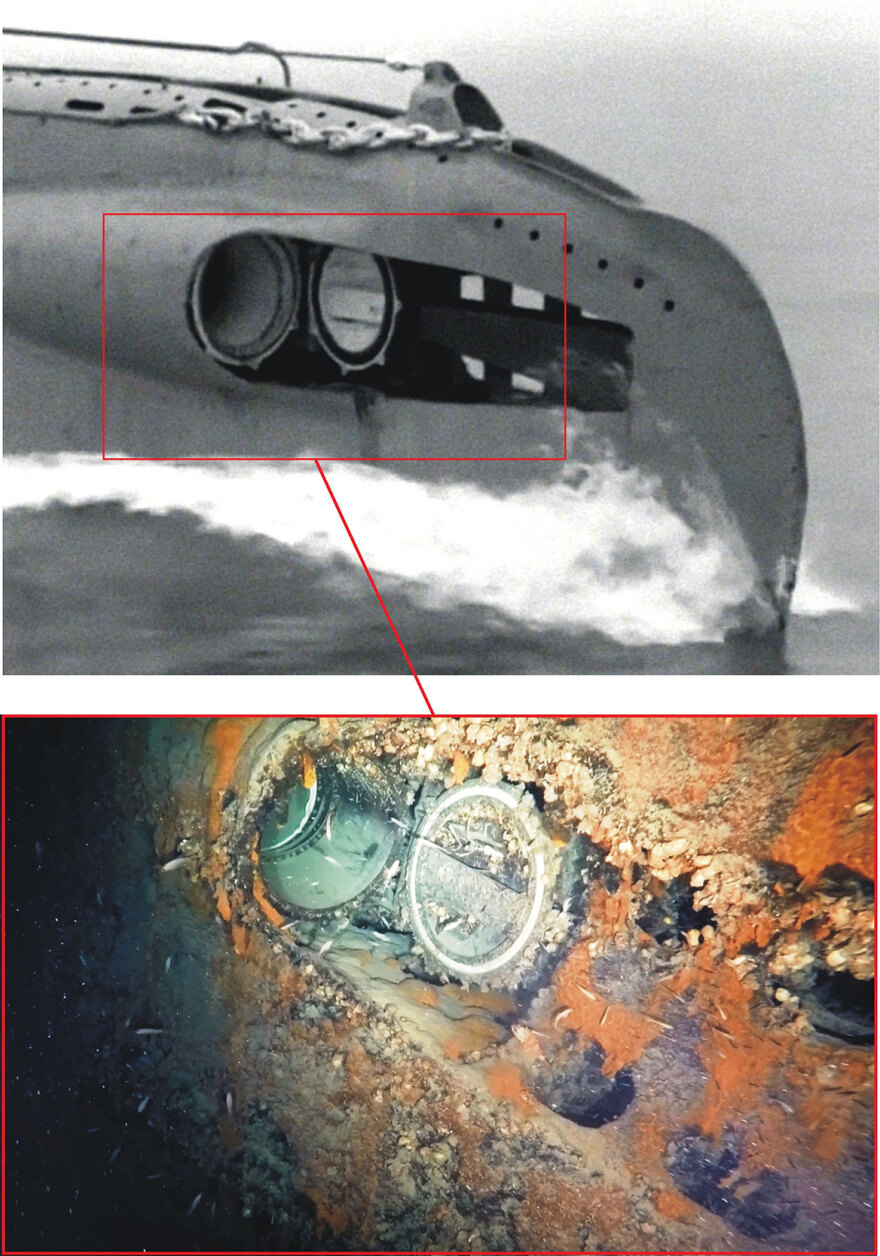
Bow section
The bow has settled on the bottom with a forward course (tilt forward) of 5 degrees. The number 7 torpedo tube cap is open and the torpedo is missing. The caps of the remaining torpedo tubes are closed.
The bow section has a total length of 29 meters. The break has taken place in nomea 55 where the living quarters of the sailors’ crew were located. On the lower right there is a 4m long longitudinal fault as well as inward lamellar deformation from the blast shock wave caused by the mine. The forward depth rudder is retracted, an indication that combined with the lowered periscopes and the open manhole in the turret leads us to the conclusion that the submarine was on the surface at the time of the explosion.
Turret
Presents a 7 degree starboard dial. The combat and observation periscopes are lowered as well as the aerial radar antenna. The turret hatch is open and the controls are in the forward half speed position. The manholes leading to the gun are closed, while the entire gun is missing from its base. The inner door leading to the engine room is open. The part of the turret is broken in nomea 98 where the engine room water dam is located. The image of the habitat area completely swept away by the explosion.
Stern section
The stern section has suffered the least damage and is the longest at 32.5 meters long. Features a large dial 43 degrees right. The Direction Finder antenna can be seen on the deck, in excellent condition. Depth and direction rudders are in the zero position. The plug of the number 10 outer torpedo tube has been opened and the torpedo protrudes 2.2 meters. Number 9 outer torpedo tube is closed.
The identity of the legendary submarine HMS Trooper
Length: 273.5 ft – 83.36 m
Beam: 26.6 ft – 8.10 m
Displacement: 1327 tons (surface) 1090 tons (standard) 1571 tons (submerged)
Speed: 15½ knots (in surface) 9 knots (submerged)
Range: 8000 nm at 10 knots surface, 80 nm at 4 knots submerged
Maximum depth: 300 ft – 91.4 m
Armament: 11 torpedo tubes (6 outboard bow and 5 outboard), 1 4 inch gun.








